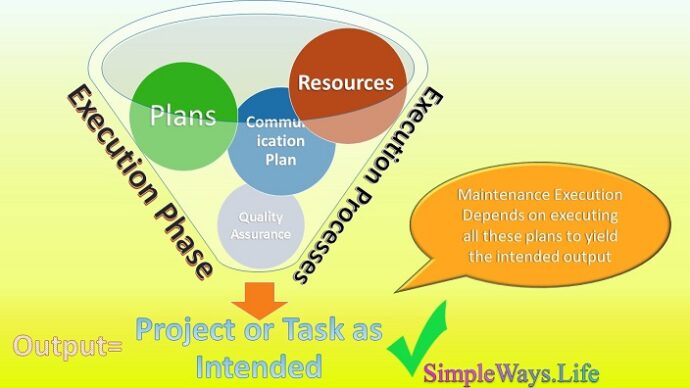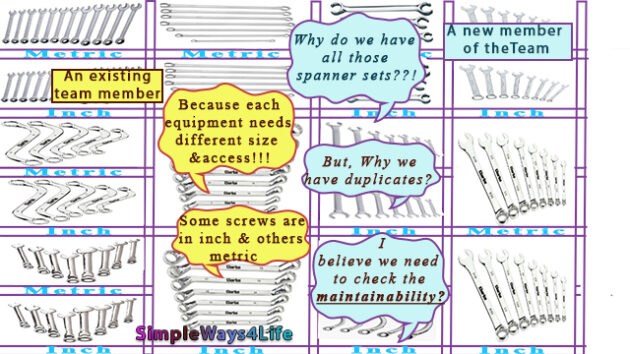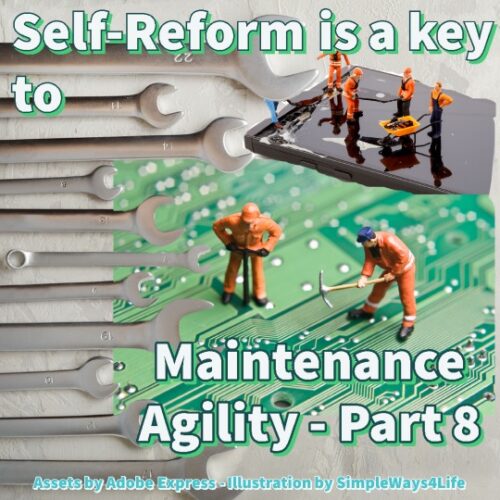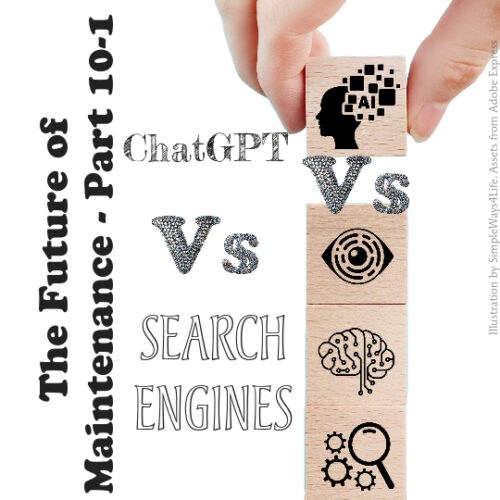The maintenance team considers the execution of the maintenance tasks as their private territory. Those are the same tasks which planners and supervisors had assembled its puzzle during the initiation and planning phases. In many work places, the maintainers at the shop floor resists the intervention of the planners or supervisors in how they execute the task. They consider themselves as the subject-mater-experts for the execution on the shop floor. Mean while they consider that the intervention from anyone who didn’t push two strokes from the grease gun or calibrated a scale with his own hands have troublesome outcomes.
In real world, sometimes this occurs but due to missing the true understanding for the execution management. In this article we shall try to shed the light on the execution phase in project management. Then we will link some lessons learned from it to the maintenance execution.
We had seen in the past couple of articles how to utilize the project management framework and methodology. We had applied it to the initiation or update of maintenance tasks. Then we had seen the complete pieces of the planning puzzle arranged as in the project planning phase. You can find the links below:
- Maintenance, is it a project or a recurring job?
- Project planning processes that can help maintenance planning
Project Execution group of processes
In the PMP arena i.e. Project management professionals space, a project has five (5) phases. Namely, they are Initiation, Planning, Execution, Control and Closing. The PMI, Project Management Institute, which is the most famous certifying body for project managers, they call them each of them a “Process Group”. This nomenclature reflects more the true nature of each phase as a several processes running together either simultaneously or consecutively. Moreover, they are interlinked. So, each process feeds the following one with the foundational knowledge it need to start. Moreover, each process might invoke an update of the previous one.
Based on this definition the execution process group inherits the management plans generated in the planning process group. Then we start executing them. In other words, we start applying what we planned to the real world:
Putting the plans into execution
- Acquiring resources. We had planned all the resources that we shall need to execute the project. Moreover, we had phased them along the execution schedule. So we know when we need each tool and each skill. Not to mention that even we know the other activities or projects that those tools or skilled team member are currently engaged in and, when we can utilize them in our project.
- The resources are not limited to what is already in the possession of our organization we might need to purchase a new tool or hire a skilled crafts man. Basically we need to purchase the parts that we will install. So, in the execution phase we start the procurement orders or contracts.
- Now there is congestion in the project with all those arriving resources and all the activities taking place. How the team receives and sends information? That’s the communication plan in action. Which information goes to which team? How is the feedback collected, converted from just information collected in the field into knowledge i.e. structured information and, who will receive this knowledge in due time to act upon? That’s again the communication plan in action.
- During the execution we need to assure that what we do is matching to the specifications planned. In other words, do the activities running in the field match what was written on the paper as plans? That’s what we call Quality assurance. It doesn’t mean that the output is within the required specifications. It means that every step follows the plan set for it.
There is an important notice here
Currently the projects that adopt the Agile Project Management Methodology -currently advocated by PMI- seek team freedom. In other words, it encourages the team to be creative while reaching an output that matches the specifications. However, The same Agile framework requires guidelines around which the team works. Those guidelines intend to minimize the chaos during project’s execution.

Now, how can maintenance execution benefit from the project’s execution framework?
Maintenance task execution is converting all the maintenance plans, preparations and team skills into an intended output from the maintenance task. It is difficult to rely on maintenance tasks that are only titles as: replace ball bearing or calibrate the weighing scale to yield the desired then intended output. Moreover, their effect on the complete production cycle, which maintenance is part of, can’t be controlled or optimized.
As we agreed in the previous article, there should be plans in the first place. Plans should cover everything needed to execute the task or the job. So that the plan for each task includes the resources whether they are tools, parts, subcontractor or skilled team members. Besides links to the general plans for communication, quality assurance and procurement.
When the maintenance job is rolled out for execution i.e. added to the schedule and may be also coordinated, then the workorder carries all these information or links to them. That’s by default the output of any manual or automated maintenance system. However, the system regardless you develop it locally or get it from the best provider won’t come up with these data. You should program those data in it during the initiation and planning phases. So, when it is time to execute a planned task, you will find the workorder packed with all these data.
How to convert the resources into an executable task?
It is the SOPs – Standard operating procedures- that play this role. They are one of the resources that we need for maintenance task execution. They are used with other documents, drawings, tools, manpower, etc.
SOP’s tell the execution team what to do. Regardless, is it a flap calibration, a scale calibration, a conveyor balancing, protection relay testing or, a ball bearing replacement, there should be some steps to follow. Also, however skilled your team is, never skip the task detailed procedure for three (3) main reasons.
The first one is that everything changes with time. So after twenty or thirty executions of the task without calibrating the task procedure to the original ones, they will be executing something different. The second reason, the one person or one team doing this task will be the only resource for executing this task. Using another team member or another group will result in problems with the execution. The last reason is the traceability. If the equipment condition deteriorates, it would be difficult to catch the root cause easily if it was due to a failure induced from maintenance itself
Maintenance tasks quality assurance
That’s where we confirm that the result of the maintenance task fulfilled the intention behind it. In simple words, you have a reason why you execute this task e.g. to align a belt conveyor so the belt is not damaged or to calibrate a scale so the dosing of the product additives is correct. You need to confirm that the maintenance done lead to the result intended. Second assurance point comes from the conformity of the execution steps, the tools, parts and time used are as planned. Otherwise either there is a problem with the plan or the execution. Either of these problems need to be addressed early enough so the maintenance won’t turn to an unavoidable growing cost or a source of failures not a tool to eliminate it.
In conclusion,
The secret behind successful execution of maintenance tasks is that the execution is fulfilling the plans and achieving the intended target. Each maintenance task execution should respect the planned resources, the engineered procedures and the quality and communication guidelines. Absence of any of those ingredients during the maintenance task execution will yield uncontrolled maintenance program and consequently weak maintenance system. As a result the maintenance program and the system derived from it will faint with time and will be stamped obsolete. Then the only remaining target from feeding them with data would be satisfying the auditing parties but no benefits are derived from the maintenance program or system.
If you feel you need help with any of these ideas we discussed, request a Management Consultancy or Coaching Services From our Store







